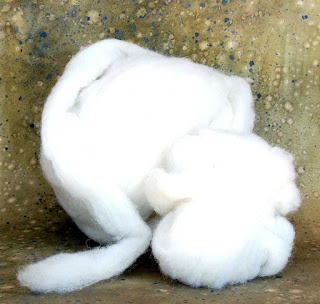A roving is a long, narrow bundle of fibers. The circumference is produced during the process of making spun yarn of wool, cotton, or other fibers. Their main use is fiber prepared for spinning, but they can also be used for special types of knits or other textile arts.
After carding, fibers lie roughly parallel in fine bundles. It is pulled out, by hand or machine, and slightly twisted to form a suitable length for spinning. This unspoken fiber string is roving. The circumference may also mean the roll of this string, the string in general (as a mass noun), or the process of making it.
Because carded, the fibers are less aligned from the top (combed) and do not have a uniform length. Carded rovings look more fluffy than combed tops, which look smooth and have a high sheen. Upper combed fibers tend to have uniform lengths due to the preparation method. Although drawing it into a strip may coat the fiber a bit. The circumference does not become confused with the sliver because there is a twist in roving.
Roving pencil is the retractable circumference type to the size of a fat pencil. It can be used by spinners with minimal drafting (pulling fibers from clumps). Knitters also use pencil rovings, similar to Lopi style threads, or when crafting items. (Regular roving can also be used in crocheting that is chopped.)
Video Roving
References
Source of the article : Wikipedia

